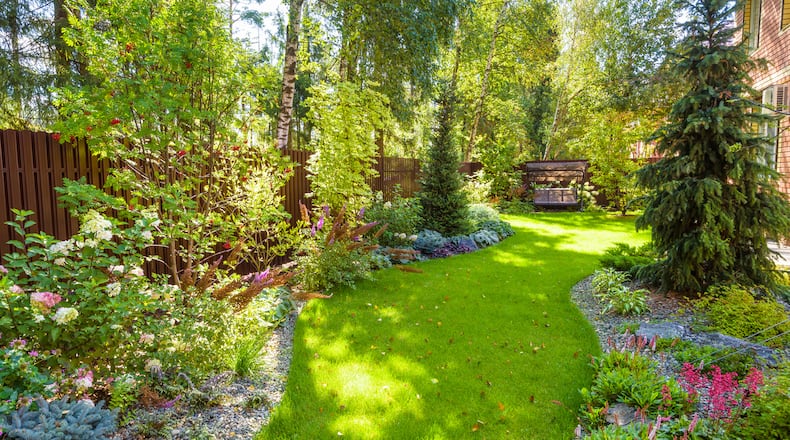Embrace ‘biophilia’
More and more homeowners are using landscape designs that allow them to reconnect with nature. The term “biophilia” refers to a person’s innate drive to maintain a focus on life and is increasing in popularity with homeowners seeking to surround themselves with nature.
Miami architect, Ralph Choeff, of Choeff Levy Fischman Architecture + Design said in a recent interview, “There is a growing focus on incorporating natural light and ventilation wherever possible. Views are emphasized, which, again, follow the theme of reconnecting with nature and the outdoors. Functional open plans continue to be popular because they foster family interaction and connection.”
Edible landscape
Functional outdoor spaces are seeing an uptick as homeowners gravitate to them and home buyers look for them. Helen Lambrakis, partner at Garden 26, a landscape design firm, offered her thoughts:
“With the rising cost of food, edible landscapes are becoming a practical yet beautiful trend. Growing your own fruits, vegetable and herbs not only promotes self-sufficiency but adds a unique, personal touch to outdoor spaces.”
This can mean sprawling gardens in larger yards and containers or vertical gardens in smaller ones. The key is functionality, whatever that looks like in that space.
Softness and curves
This year promises to reveal the softer side of architectural elements in house design. RJ Living interior designer, Bree Steele, said in an interview that “architectural designs that incorporate flowing, curved elements will be huge in 2025.”
Credit: Getty Images
Credit: Getty Images
This means sculptural forms, rounded walls and arched doorways to soften the edges and offer a sense of harmony and movement. The feel is more natural, promoting relaxation and calm. This design choice flows from the interior to the exterior, giving the sense that you have entered a haven of peace.
Natural, ‘messy’ landscaping
The “perfect” pristine yard is losing ground as more people are embracing the imperfect, the messy side of their yards and gardens. Abigal Shea of design firm Studio Eastman, weighed in on this growing trend:
“Instead of perfectly manicured flower beds, we’re seeing grasses, trees and more casual greenery having a serious moment in landscaping.”
Credit: Getty Images
Credit: Getty Images
It may be the entire yard, or it may be just a piece of it, but whatever the case, mini meadows are in, and more people are opting to let their yards go au naturale. And the results are stunning.
Less grass
On the other end of the spectrum, homeowners are following a completely different trend – getting rid of their lawns altogether. Or at least a large portion of it. Homeowners are doing away with the grass in their yard, but that doesn’t mean they aren’t growing something.
Scott Zimmer of Zimmer Gardens, a landscape design firm, offered several creative replacements for traditional grass:
“Options include a tapestry of decorative grasses, low-growing ground covers like micro clover, bee turf, creeping thyme and ajuga. For a more polished look, planting through a large area of pea stone never disappoints.”
Whether your goal is to increase your curb appeal or simply update some tired landscaping or home exterior, these are some of the top trends of 2025 for architectural features. The overarching trend seems to lean toward nature, harmony and peace.
And we could all use a little more of that.
About the Author



